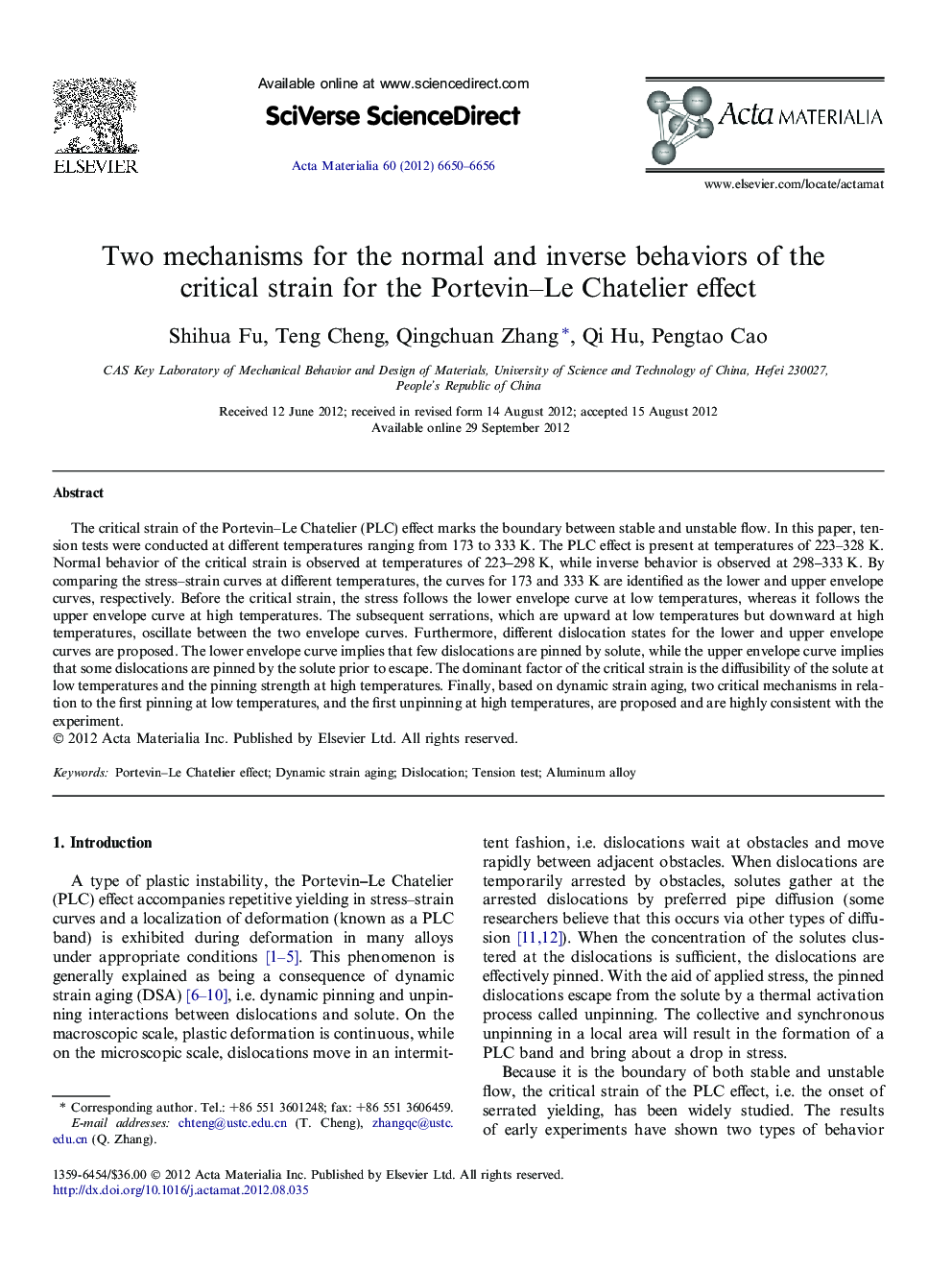| Article ID | Journal | Published Year | Pages | File Type |
|---|---|---|---|---|
| 1446524 | Acta Materialia | 2012 | 7 Pages |
The critical strain of the Portevin–Le Chatelier (PLC) effect marks the boundary between stable and unstable flow. In this paper, tension tests were conducted at different temperatures ranging from 173 to 333 K. The PLC effect is present at temperatures of 223–328 K. Normal behavior of the critical strain is observed at temperatures of 223–298 K, while inverse behavior is observed at 298–333 K. By comparing the stress–strain curves at different temperatures, the curves for 173 and 333 K are identified as the lower and upper envelope curves, respectively. Before the critical strain, the stress follows the lower envelope curve at low temperatures, whereas it follows the upper envelope curve at high temperatures. The subsequent serrations, which are upward at low temperatures but downward at high temperatures, oscillate between the two envelope curves. Furthermore, different dislocation states for the lower and upper envelope curves are proposed. The lower envelope curve implies that few dislocations are pinned by solute, while the upper envelope curve implies that some dislocations are pinned by the solute prior to escape. The dominant factor of the critical strain is the diffusibility of the solute at low temperatures and the pinning strength at high temperatures. Finally, based on dynamic strain aging, two critical mechanisms in relation to the first pinning at low temperatures, and the first unpinning at high temperatures, are proposed and are highly consistent with the experiment.
